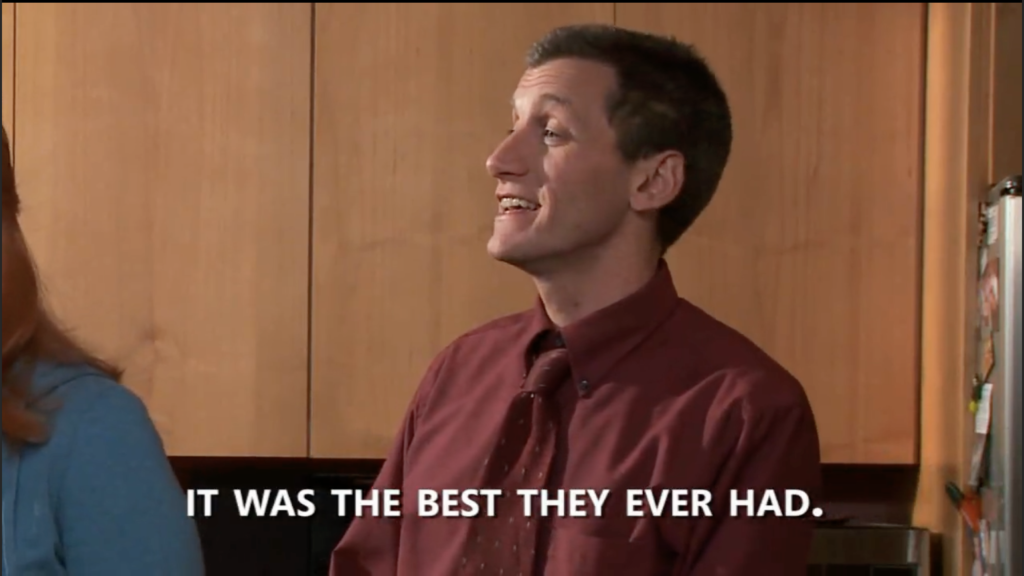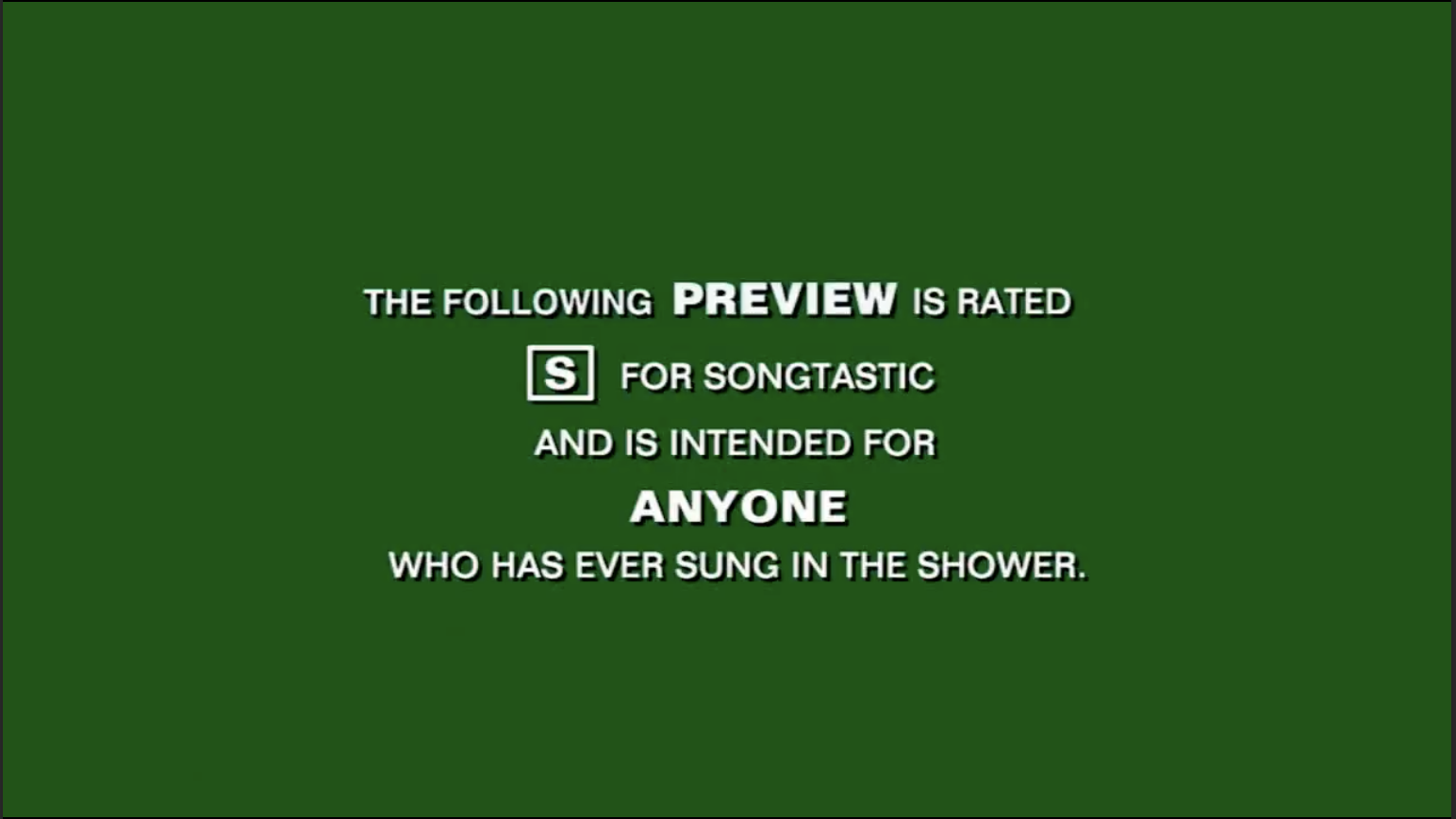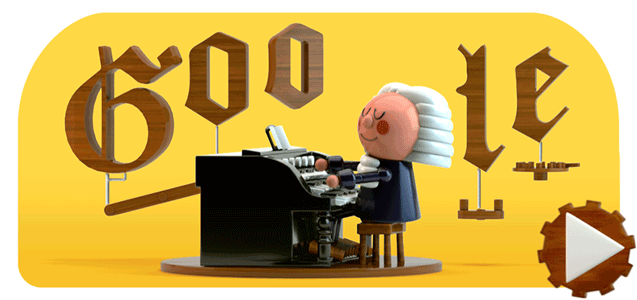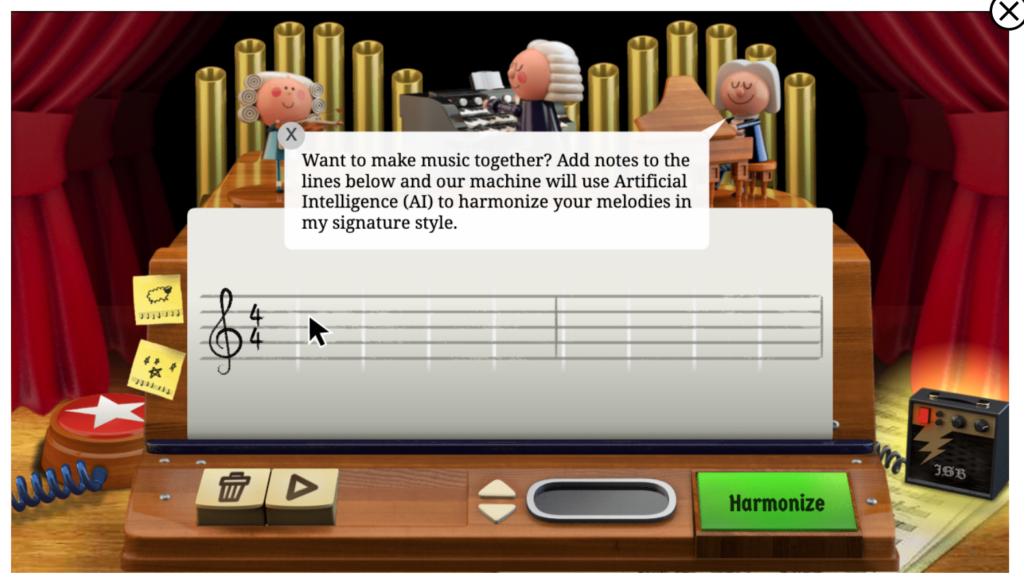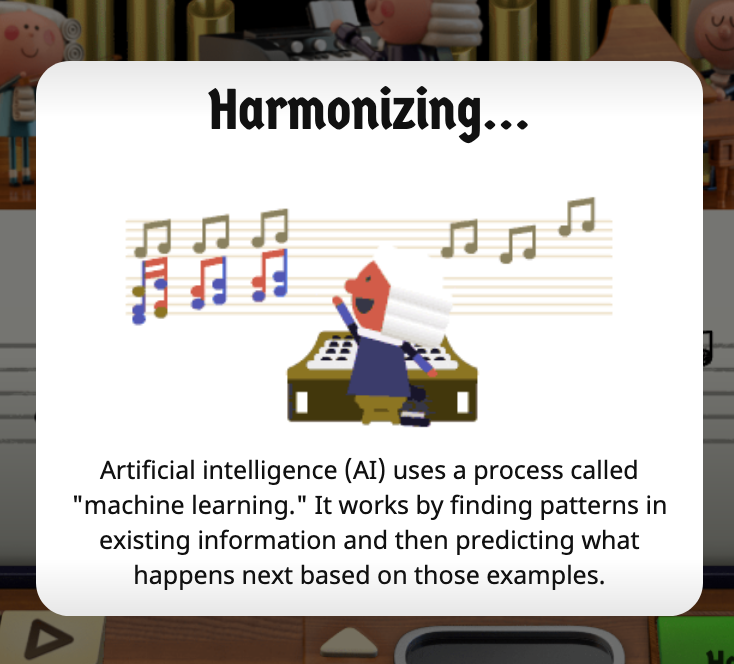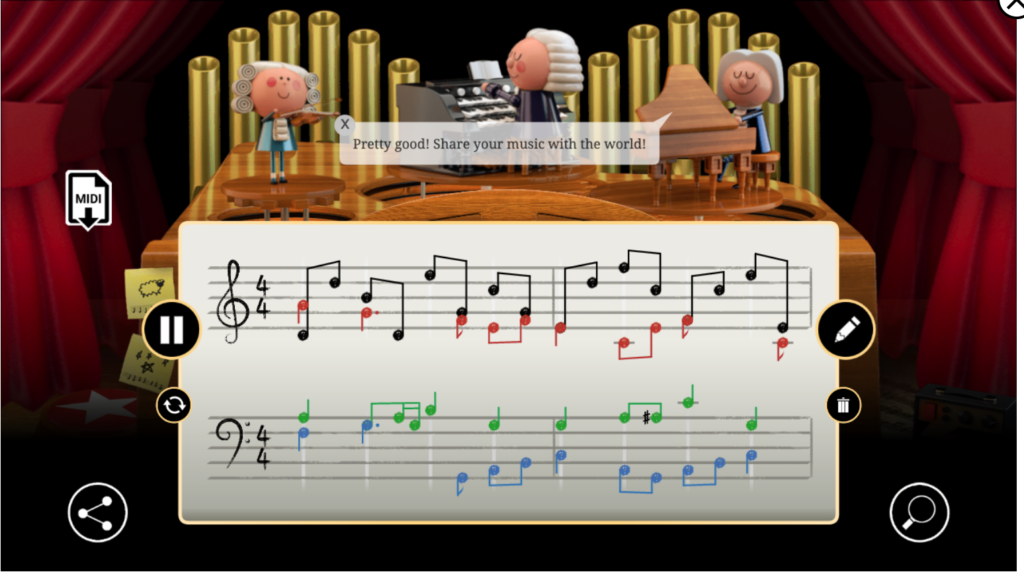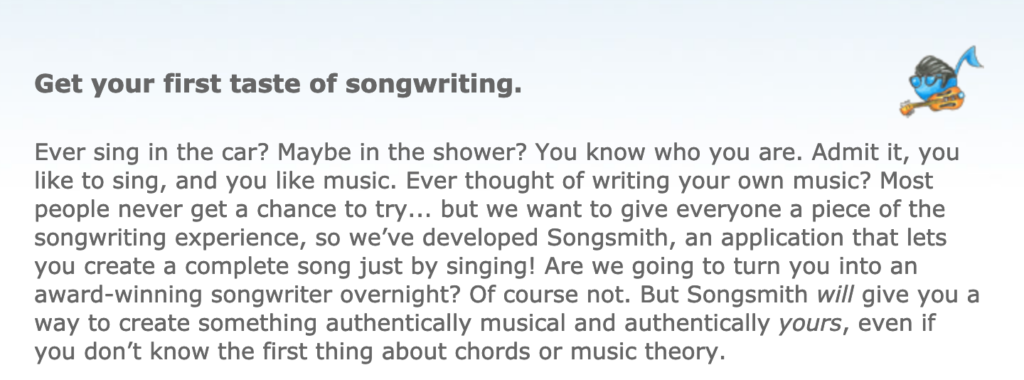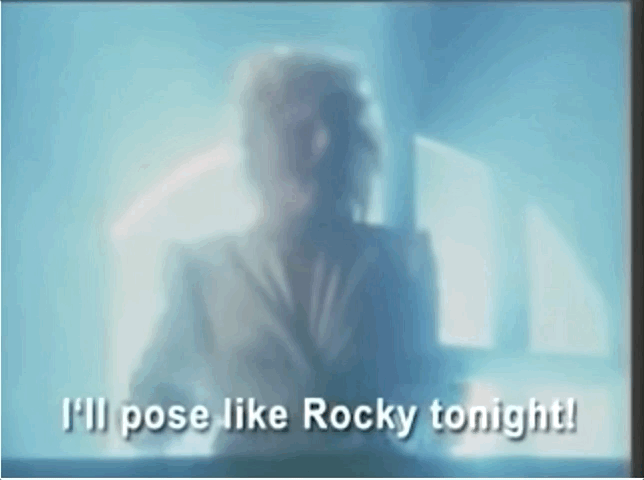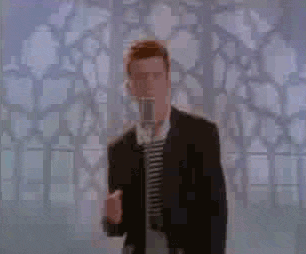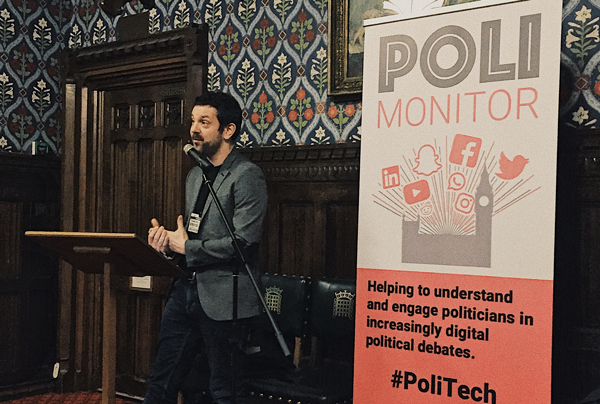I presented a more exploratory type of paper than usual at the excellent The Web That Was conference in Amsterdam (19-21 June 2019), taking the opportunity to delve into a side-project that had been in the back of my mind for a long time and which had taken on nostalgic relevance at the start of 2019: the memetic moment that was the reaction to Microsoft’s Songsmith software in early 2009. While I work out what to do with the paper going forward, and how to frame it for publication, here is what I presented on 21 June in the ‘vernacular creativity’ session:
‘“I’m singing with my laptop, making up new songs”: Automated music-making and vernacular appropriation in the moment that was, and future that wasn’t, of Microsoft Songsmith’
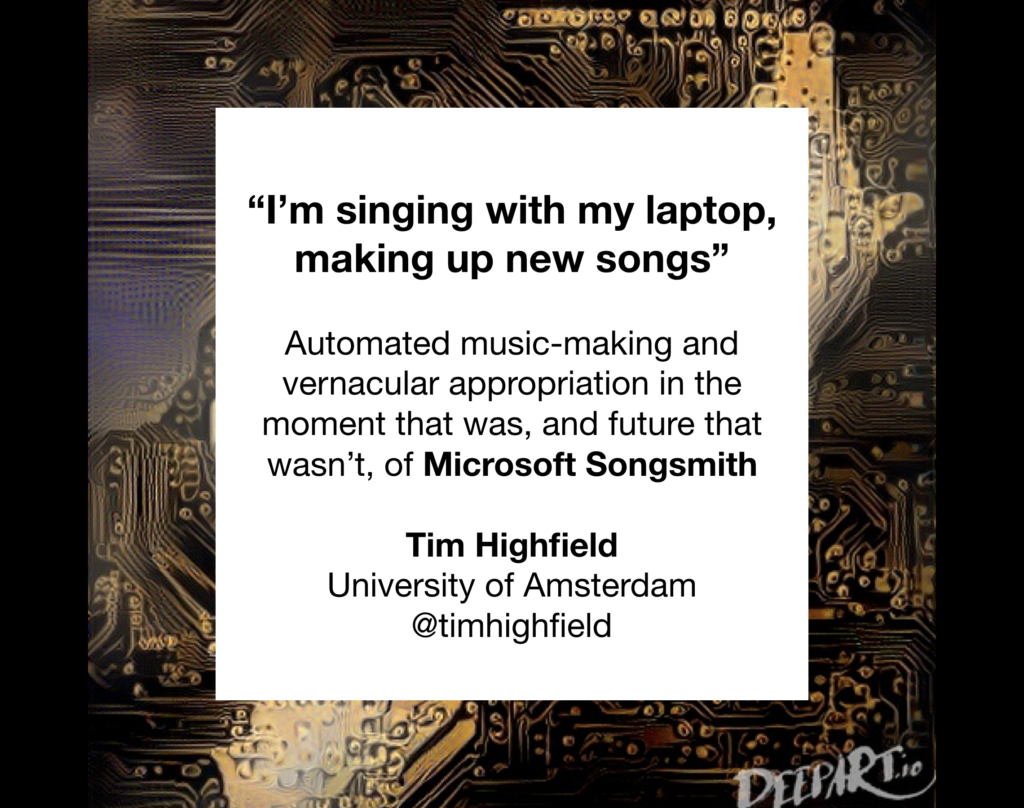
Good morning.
So, my talk today is about ways in which music, machine-learning and AI, and digital cultures have intersected, focusing primarily on a moment from just over a decade ago and what it demonstrated, what it meant, and what it tells us about an aspect of the web that was and the web we have now.
But before we head back to 2009, I want to start in the rather recent past. Smash cut to 21 March 2019, and Google has just released its latest Google Doodle: a celebration of the life of German composer Johann Sebastian Bach.
Now, the Doodles have an incredibly long history at this point – Google’s been offering these commemorative, date-specific interventions playing with its logo and imagery for a long time now, moving from static images to animations and various interactive examples including several games. But this day’s Doodle, presented to Google users in many countries in the Northern Hemisphere, is a little different: it’s not just interactive, but represents part of Google’s foray into machine-learning for music-making. Users are presented with a blank stave on which to ‘compose’ a couple of bars, which is then harmonised in a Bachian style using a model trained on Bach’s compositions. The results are able to be saved as midi files, shared across social media, and reharmonized if not content with the initial results.
It’s a bit of fun, in the usual way that Google Doodles, as John Durham Peters notes in The Marvelous Clouds, offer up the whimsical side of a company that presents in a very different way to its advertisers, partners, and critics and has collected a whole lot of information about its users… But what I’m specifically interested in here is how the Bach Doodle also represents a rather sophisticated intervention by a major digital media platform into the world of algorithmic music, artificial intelligence, and digital culture – one which is extremely constrained so that users cannot go ‘off-script’, but which also offers a very concise and simplified packaging of some complicated computational processes. I offer it up here as a contemporary example of the type of processes that featured, to rather different ends, when another major tech company made its own intervention into this context…
Over ten years earlier, on 8 January 2009, Microsoft launched a piece of software called Songsmith, a music creation application developed out of Microsoft Research. Songsmith was a commercialisation of a research project named MySong, a collaboration between researchers at MS and the University of Washington, and which had previously been featured in papers at CHI and AAAI in 2008. The premise of MySong was straightforward – machine learning processes would automatically generate a backing track for vocals, selecting chords based on the model on which it was trained – although obviously the studies behind it were far from straightforward – and I want to preface here that my intention here is not to rip apart the research on which Songsmith was built, nor the intentions of the team behind it!
Now, Songsmith was far from the first attempt to automatically or algorithmically generate music – in the 1950s, for instance, the musical potential of machines saw, among others, the Datatron used in 1956 to create a piece of music dubbed ‘Push Button Bertha’, with added lyrics by actual human Jack Owens. Songsmith represents, though, the technological development to the point where this could be accessible and distributable to many more, offering a light and breezy interface that would allow the user to easily create new songs in the style they chose – from California Soft Rock to Alternapop to New Jazz, no musical skills required.


To give the software further exposure, the team behind Songsmith created a commercial that they chose share – as was appropriate – on the by-then well-established platform of YouTube – but I think we need a little more context here.
What was YouTube like in January 2009, in the days leading up to Barack Obama’s inauguration (this fact is not relevant but I just wanted to throw it out there)? And especially, what was YouTube like with regards to music creation and related contexts?
Over three years on from its launch, YouTube as cultural space was already clear: Jean Burgess and Joshua Green’s first edition of YouTube was already in the works, going in depth into exploring YouTube as dynamic cultural system and site of participatory culture. One of the ways that this was happening was through music – not just sharing clips and footage, but through uploading users’ own original work and covers, and through play and other forms creativity drawing on others’ work.
Now, obviously, many of these practices were happening before YouTube – mash-ups and remixes have a very long history, as does the general playing around with established texts for humorous, satirical, ironic, political purposes (among many others); and YouTube is also not the only place this was happening online nor necessarily where digital cultural trends were originating. But where YouTube comes in is offering a central, accessible platform for these practices to be housed, shared, spread, emulated – inspiring trends and memes of their own. So, we see the early viral videos of ‘Chocolate Rain‘, the ongoing memetic references and remixes – to the point where Weezer’s 2008 video for ‘Pork and Beans‘ highlighted many early YouTube ‘stars’ and references; DJ Earworm’s United States of Pop mash-ups were already two years old, but also the early moments of genres like shreds, or literal videos, trafficking in the recognisable and familiar yet not necessarily the ‘best’.
And of course, there was this guy.
And so YouTube cultures at the start of 2009 represent a few different things. First, there’s a taste performance going on – in the Dadaist style, or indeed as Whitney Phillips wrote about in the context of the notorious ‘worst film ever’ candidate Troll 2, links to the Japanese term kuso – things that in English “could variously be described as camp, kitsch, and irony. Used as an interjection, the term essentially means, “Ha ha, awesome, this is terrible.” … The importance here of taking the highly familiar and messing with it – and especially taking things are not necessarily ‘the best’ or the most high-brow, but the things that are well-known regardless of – and sometimes in spite of – their actual quality
It’s also highly representative of what Jean Burgess describes as vernacular creativity for digital contexts – of doing new things with texts which make sense in the context of their space of production and consumption, of doing things on YouTube, for instance, which reflect what is already happening on the platform.
And so it’s in this space of mash-ups and remix cultures, of an established cultural practice within which irony and mockery and the like play a critical role, of a technical capacity to respond with new creative content and a willingness to engage with new and existing texts, of iMovie and Windows Movie Maker uploads — that Microsoft decided to launch Songsmith, with this:
[I only showed the first minute of this given time constraints]
I’m not going to show the whole video – it’s available on YouTube, still — but it’s over three minutes of this; awkward scenes demonstrating potential use of the software, wrapped up in a narrative about the big glow-in-the-dark towel ad campaign. It’s cheesy and bad – but intentionally so; the actors are the researchers behind the software, and are neither actors nor musicians. It’s intending to highlight how regardless the motivation or ability of the users, Songsmith works – as one character in the video notes later on, “Microsoft, huh? So it’s pretty easy to use?” – and that’s especially important for something that could be – and was – used as an educational resource in schools.
But arguably, the ad did its job too well — in intentionally being cheesy and bad, it got attention and encouraged downloads of the software – but to what end? The intended use here gets overlooked as the immediate wave of responses to Songsmith uses the software as an impromptu remix engine, an inadvertent meme generator, as a rush of vernacular creativity saw isolated vocal tracks from well-known songs used as the seed for Songsmith’s backing tracks. These work on the juxtaposition of source and new genre, on the familiarity of the song in its original context and how out of place the new accompaniment is, at times going beyond irony to deliberately ‘how bad can I make this’, not even trying to match tempo. There’s also of course the importance of references for success – something that is recognisable enough in order to make the joke accessible, to get the views…
So, let’s test some examples:
Even when truly original works are created, there’s still an emphasis on the inappropriateness and lack of quality – musically and/or aesthetically – of Songsmith, such as German media artist Johannes Kreidler’s ‘Charts Music’, where stock prices leading into the 2008 Global Financial Crisis were used to generate the melody:
But at the same time, even though this merciless ‘this is not good’ response belies the amount of intellectual labour that went into the background, regardless of its front-end aesthetics – it is still something that doesn’t go beyond its initial premise – the taste performances, the mockery, the irony, are firmly situated in taking the familiar and drawing attention to how computers are no match for this.
But what does this moment represent, then? If Songsmith’s moment was just that, why be interested in it?
For a start, it’s useful to view it in context of what came next – two years later, Rebecca Black’s ‘Friday’ was released, its own mix of banality, auto-tune, and perceived quality taking it viral to a far greater extent, highlighting in particular the intensity with which ‘bad’ content is met with affective taste performance; and this extends further as music-related meme cultures develop in directions that mix the vernacular creativity and tropes of YouTube memes with attempts to push the boundaries of technical ability and the viewer’s ability to endure the new memetic text – references upon references upon references, variations upon variations, twisting and shaping key texts in ways which demonstrate membership of this space through the ability to do something new – to go further – rather than just offering a new backing track for a different song.
Beyond YouTube’s vernacular creativity, though, it’s also important to consider where Songsmith fits in a lineage of music-making tools and apps – where AI capabilities have increased to the point where music creation is happening in different genres, particularly in generative spaces; the Scape app co-developed by Brian Eno and Peter Chilvers for instance is an automated extension of the ambient principles and techniques Eno has used in his music for several decades; and where tools for creating new music without any experience are both aesthetically more sophisticated and concise; Yotam Mann’s AI Duet experiment for Google offers the user a piano duet with AI generating responses to the chosen keys, while Google’s Chrome Music Lab provides different exploratory tools for playing around and creating – all without having to sing into your laptop. Crucially, perhaps, these tools are self-contained, running in the browser without needing any downloads, and also by their limitations means there’s less avenue for direct off-label uses – less opportunity to take this into a new direction outside of the intended use, as also seen with the Bach Google Doodle, where to draw on Jean Burgess’s work again, usability once more triumphs over hackability.
As for Songsmith’s legacy… well, after the initial flurry of videos the meme kind of died – and what remains are various lists to a few dozen videos on YouTube, some of which have since been removed for copyright infringements – or just blocked in some countries — or deleted by the users, (but archived elsewhere), so the cultural memory of this gradually deteriorates. Occasionally Songsmith content has had a renewed burst of energy when the ad gets rediscovered and circulated in spaces like reddit – the Songsmith subreddit came five years after the ad was first posted, but also fell apart after a short time – one of the issues here being that Songsmith itself is not a dynamic piece of software in terms of updates; as Wendy Chun argued, new media live and die by the update, and Songsmith offered something new and different when launched – and then didn’t change, only offering that same thing.
And yet, as the memetic memory fades and the videos gradually disappear from YouTube, Songsmith lives on – despite not being updated since 2012, it’s still alive, downloadable from its home page (and its own aesthetic time capsule), with a free six-hour trial that can still be installed on Windows operating systems, and with the developers still answering the very infrequent queries on the support forums. So while the moment that was for Songsmith was fleeting and, performatively at least, doused in mockery – and AI and algorithmic music-making have moved on considerably in usability and aesthetics, the future that wasn’t need not be entirely true…
